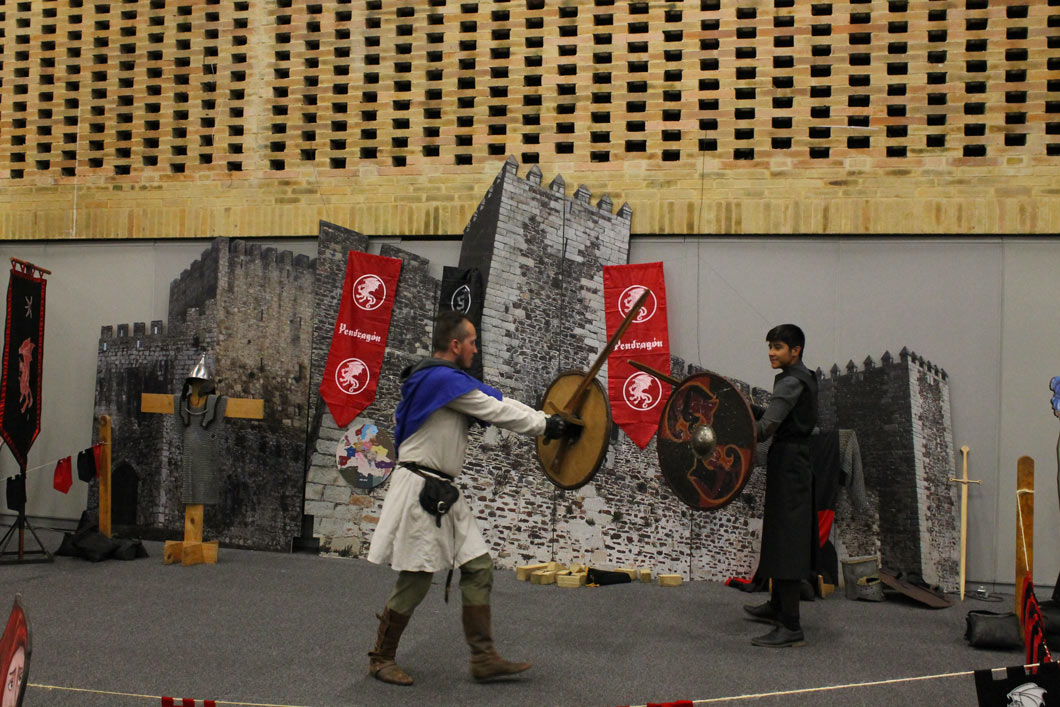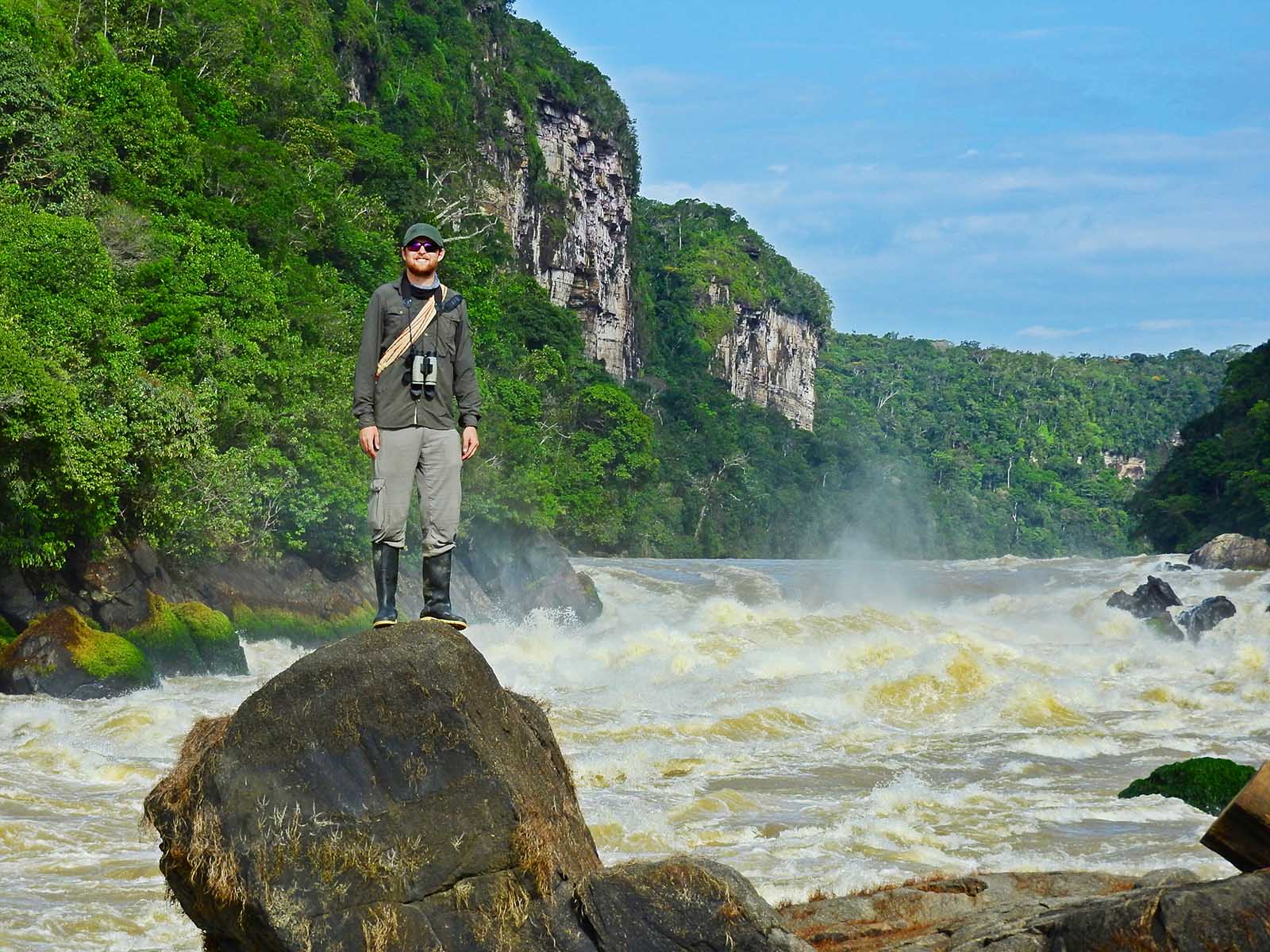
The raging water and giant cliffs of the Araracuara Canyon, All photos: Chris Bell
Meeting a group of dissident guerrillas while meandering along the Caquetá river may sound like every traveller’s nightmare, but in this instance they only wanted insect repellent and a few hours of attention.
The distance between the crumbling shell of the old Pentecostal Church and the wooden benches by the dock was only about a hundred metres, but it felt like miles as I walked across the overgrown grass, a light mist still clinging to the bank of the Caquetá River. The three young guerrillas watched me pass with hardened eyes. We nodded tense greetings and I was immediately struck by how young they were: the girl, a pretty Afro-Colombian teenager, wore a bright-yellow hair clip that seemed strangely out of place in this jungle dawn of muted greens and browns. We walked on to the benches, where the two older guerrillas sat waiting.
I shook hands with the commander’s right-hand-man; a stern, unsmiling guerrilla in his early 50s with close-cropped hair and a thin gold chain resting on his barrel-like chest. He made a joke about how they had no intention of detaining us, but his hands were casually draped across an M16, and I guessed that I probably couldn’t simply excuse myself and leave. The commander himself was in his late 40s and sported a well-kept black moustache and a greying soul-patch. He gestured for us to sit down on the grass and offered me a cigarette which, mainly to ease the knot in my stomach, I gratefully accepted. He spread out his hands and began to explain – starting his story with La Violencia – how he came to be in the position he was: a commander of the dissident 1st Front of the FARC, patrolling the forgotten rivers of southern Caquetá.
***
I hadn’t intended to be there at all – I had been taking a break in Pasto between two birding conferences when a friend in Florencia rang and invited me on a ten-day fishing trip into one of the most unexplored regions of the Colombian Amazon. The plan was to travel down the Caquetá river as far as the Araracuara Canyon, before turning north up the Yarí, and ultimately entering the Mesay, a narrow blackwater river which flows down from the isolated massifs of Chiribiquete. However, soon after departing from nearby La Tagua – a one-horse town on the border of Putumayo and Caquetá – we began to hear whispered reports of guerrilla detentions past Araracuara, and we reluctantly shelved our plans to explore the Mesay.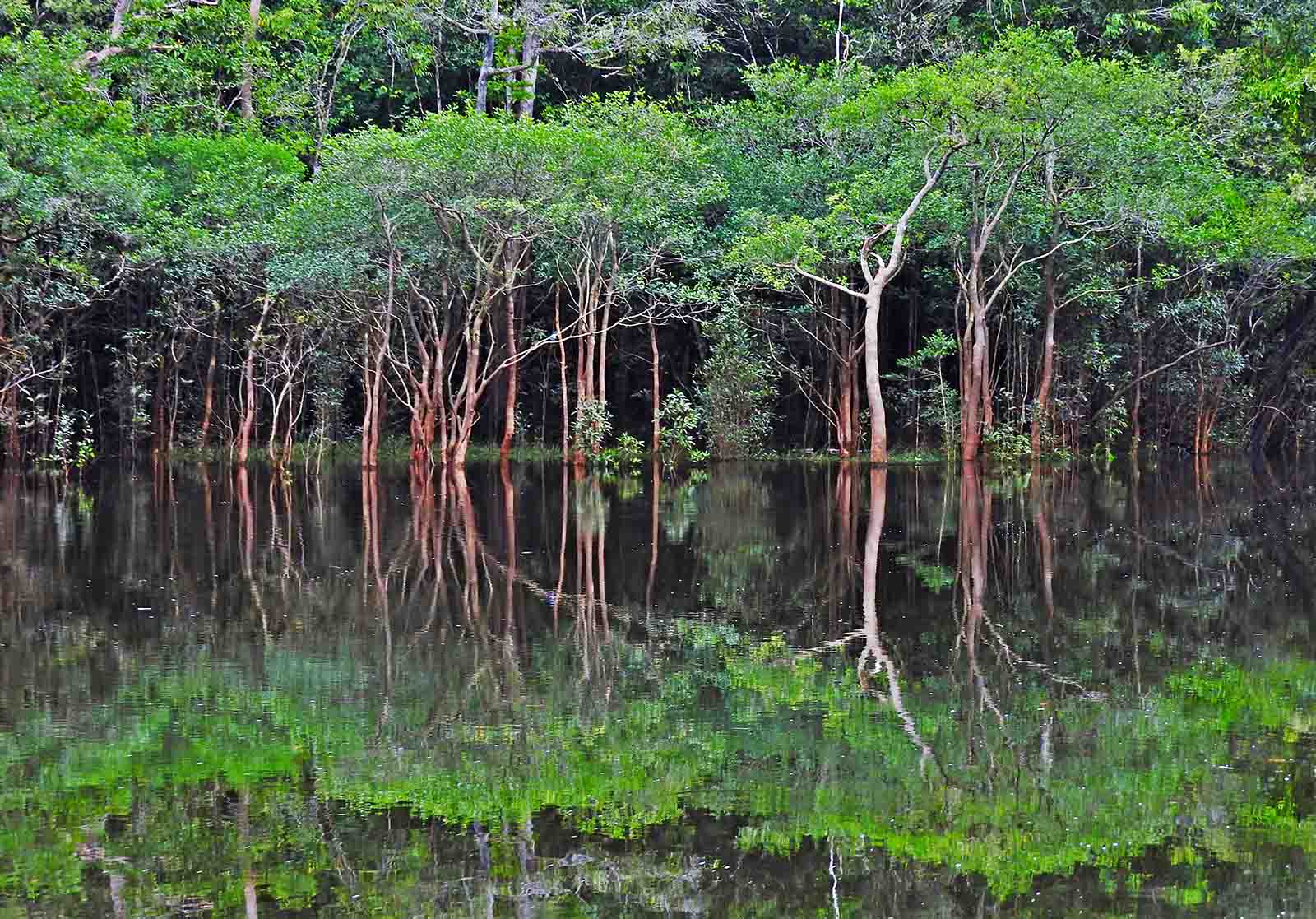
In order to keep to our tight schedule, we travelled for more than ten hours per day in a small boat with no awning, completely exposed to the merciless rays of the sun. There were six of us on board and to look at us you would have thought we were on our way to rob a bank: hats pulled low over our faces, t-shirts tied around our mouths and noses, collars up; anything to escape the sun pounding down on our heads from dawn until dusk. The river seemed endless, but the monotony of our journey was regularly broken by moments of real beauty and wonder: flocks of parrots and macaws arrowing across the orange skies at sunset, the water perfectly mirroring the immense sky stretched out above us, hundreds of turtles sunning themselves on wide river beaches and a howler monkey swimming past the prow of our boat while crossing the Caquetá river.
We slept on the floors of houses, riverboats and wooden shacks, reaching human settlement each day before nightfall. One man who took us in had a gaunt, haunted face, three emaciated dogs, and severed deer hooves as clothes hooks. Another night we slept in a small indigenous community. There were pieces of tapir meat grilling over the fire and our host’s baby daughter was completely nonplussed by my appearance – she kept her eyes so rigidly fixed on me that she eventually bumped into the wall and fell over.
Related: Travel of the beaten track: Stuck in the middle, Mitú
When we finally reached the Araracuara Canyon, it was as magnificent as I had imagined: a thunderous tumult of raging water, formed as the Caquetá River squeezes its vast bulk through a gap of just 30 metres, surrounded on both sides by giant rocky cliffs. The roar of the water drowned out the shrieks of blue-and-yellow macaws as they wheeled around the cliff tops, fishermen hung from precarious wooden platforms over the deadly whirlpools and ancient petroglyphs stared back at me from worn boulders on the riverbanks.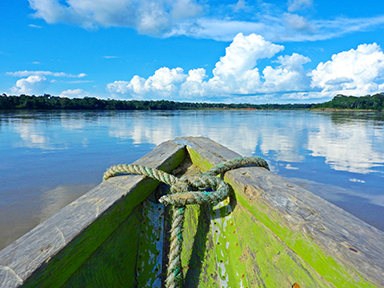
However, soon after arriving it was time to turn around and head back: the huge distances we’d travelled had left our schedule almost impossibly tight, and we barely had enough gasoline to make it back to La Tagua. The first few days passed uneventfully and we were less than 48 hours from our destination when we stopped at the village of Cuemani for the night. The mayor directed us to sleep on the floor of the old church; an unloved building that had fallen into terminal disrepair, where he casually mentioned that the guerrillas had passed through earlier that day. Uneasy at this news, I wandered up to the maloca in the dark and spent a few hours sitting there in the cool air, taking mambe and ambil – coca leaves and baked tobacco paste – with the older men, before heading back to a fitful night’s sleep on the uneven wooden planks.
Upon waking the next morning, it became clear that the guerrilla patrol had caught wind of our presence and returned to the village. I was quietly warned by one of our group to hide my camera, before we were summoned for a meeting with the commander. It was a beautiful morning; the mist hung over the river in the half-light of a jungle dawn. The far bank was no more than a faint green smudge, barely visible through the haze; but I barely noticed, caught up in my trepidation at what was to come.
***
As it turned out, I needn’t have worried: the commander spoke at us for a few hours, telling us his story, and his reasons for choosing not to participate in the peace process. We smoked a few more cigarettes, they borrowed my mosquito spray, and eventually gave us permission to return to our boat and continue our journey. We hastily prepared to leave, and as we motored upriver I glanced back to see one of the young guerrillas watching us from the bank, one arm on his rifle, the other holding a smouldering cigarette butt, its smoke pluming upwards in the humid jungle air.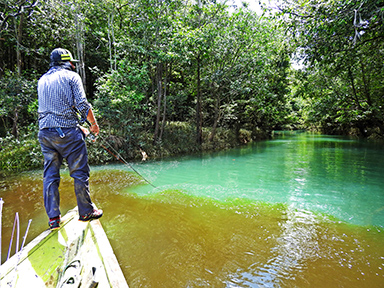
That afternoon, as I lay in the prow of the boat searching for some respite from the heat, I thought about what I had just experienced. The FARC occupy such a unique place of fear and curiosity in the collective Colombian imagination and, although the leaders have now replaced military fatigues for suits and ties, there are still perhaps as many as a thousand dissidents out there on the fringes of Colombia, calling themselves the FARC and continuing their war on the state. And yet, in the huge expanse of rivers and jungles between La Tagua and Araracuara, the first thing you notice is the complete absence of the state. I spent ten days journeying along the rivers of the Colombian Amazon, but there was very little in that time to remind me that I was even in Colombia, except for the fading tricolour flags sewn onto the uniforms of those five guerrillas. This vacuum, and who rises up to fill it, raises many big questions about the future of the Colombian conflict and the peace process. Lying there in the sun, on my way back to the towns and cities of modern Colombia, it was hard not to conclude that this place was something different; a place which exists as a curious sort of nether-region, somewhere between the past and the present, between Colombia and nowhere. And one which I felt lucky to have been given the chance to explore, even if only for a little while.
Chris Bell is a freelance writer who has travelled to all of Colombia’s 32 departments. You can follow his off-the-beaten-track Colombian adventures on Facebook @ChrisBellTravel and Instagram @ChrisBellColombia.




